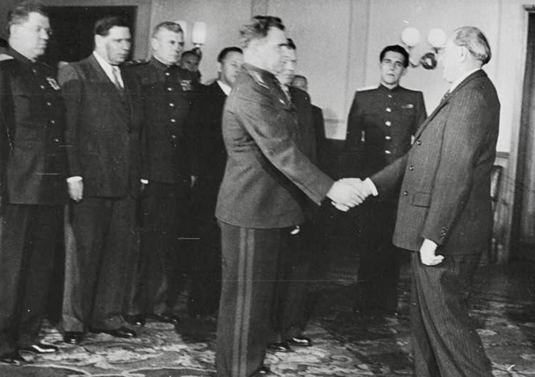Organizational Silos and the Civil Defense
- Maria A. Kithcart

- Aug 18, 2024
- 2 min read

Pictured: (Stalingrad soldiers and relatives) A. Ya. Ochkin, A. M. Davydova, Marshal of the Soviet Union V. I. Chuikov, N. I. Smorodin. In the second row: Raya Davydova (daughter of A. M. Davydova), V. V. Filimonov, V. V. Gusev, Kolya Smorodin (son of N. I. Smorodin), 1965.
Management and leadership professionals often encounter resistance from other department heads with sharing of resources and collaboration. Within an organization, holding departments, specializations, or locations as separated groups of experts creates silos. The problem arises when employees are physically separated, but their priorities are departmental rather than company-wide. It is easy to see how a siloed approach is not effective nor efficient when it comes to meeting organizational objectives and goals. However, a siloed approach is still utilized in all sectors of industry.
According to The New York Times article “Soviet Is Revising Its Civil Defense” appearing 17 March 1965, Marshal Chuikov was assigned as the Chief of the Civil Defense in the Soviet Union in January 1964. He referred to the development of a centralized, comprehensive civil defense structure in an interview with the Novosti Press Agency in 1965, which in turn distributed the information to Soviet media. However, Vasily Ivanovich’s appointment to this position came much earlier—in 1961—during the time when he also served as the Chief of the Soviet Ground Forces.
Given Chuikov’s wartime experiences in seeing firsthand the devastation to the civilian population of Stalingrad and beyond, he held a deep sense of patriotism and responsibility to protect and defend Soviet citizens. It was a duty he took very personally and seriously. Having been a veteran of heavy combat on the front lines and having served in leadership positions in Germany and with the Kiev Military District, he understood intimately the need for a coordinated defense effort.
Using this approach meant collaboration with other departments, open communication between various stakeholders, and the wise utilization of mass media to distribute information to the public. Instead of each locality being responsible for its own defense (which proved to be non-existent in some cases), a thorough plan incorporating organized defense covering citizens from birth to old age was developed and implemented. Vasily Ivanovich knew that a segmented approach—and a siloed system—would not be effective in the event of an attack by weapons of mass destruction. And, during the Cold War, the threat was real…



